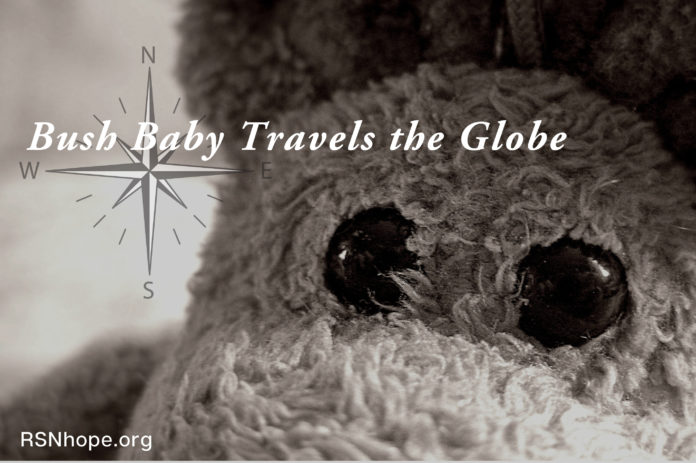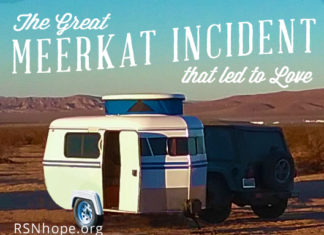This is a story about a little stuffed koala bear-like animal that has traveled the globe to visit people with end-stage renal disease (ESRD), bringing them love, joy, and support from fellow travelers with kidney failure. The tiny toy creature, called “Bush Baby,” has journeyed to five continents, staying with one enthusiastic host or hostess after another.
You might even subtitle this little travel tale “The Education of Bush Baby.” Why? Because, by the time he came back home, he had visited patients receiving virtually every kind of treatment available for chronic kidney disease (CKD).
A Global Phenomenon
But how did he know whom to visit? Why was he in such demand? How did one little stuffed animal generate so much excitement and camaraderie around the planet?
The answer is that behind the phenomenon of Bush Baby lay an international network of people united by a profound common bond: advanced kidney failure, or ESRD. The members of this network, bound by the limitations of chronic illness, help each other through rough times by pooling their knowledge and kindness via an e-mail community called Dialysis Support. It was within this environment of communication and mutual encouragement that a small, dun-colored, furry little fellow took to the road (or mail, as the case might be) to see what he could do to lift spirits and learn about kidney disease.
Bush Baby started his travels in Lompoc, CA, in May 2003. He had been a Christmas gift for John Mudie, a Dialysis Support member and peritoneal dialysis (PD) patient. One of John’s network friends and fellow patients, Robin, needed cheering up, and a prescription for furry support seemed just right for the self-dubbed “Mom” of two dogs and a cat. The Dialysis Support e-mail network made Robin’s hearing difficulties irrelevant to the close and warm communication she shared with Internet friends. It was just the place for her to share her love of “furries.”
In the interest of building that communication, John made a short Internet movie for Robin. It showed Bush Baby in John’s hand, and you could hear him squeak when John pressed his stomach. But that wasn’t all. With a near Hitchcockian twist, John turned Bush Baby over and revealed his little abdomen, complete with a PD catheter in it! Robin was captivated. The education of Bush Baby had begun.
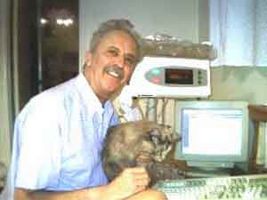
Bush Baby’s PD Education
There are several ways to treat kidney failure. One is PD, which involves a special fluid that flows into your body and is then removed at least once a day. The fluid rests in what is called the peritoneal cavity (a space between the inside of your abdominal wall and where the internal organs lie).
With PD, a tube (a catheter) is placed through the wall of your abdomen. The tube extends from the inside of your abdomen to the outside, making it possible for the PD fluid to flow in and out (but only when you want it to).
John, who was on PD, said it was a nice change from having to go to a dialysis center three times a week for hemodialysis (HD), which he had been doing. He also said that he felt better on PD.
With the type of PD that John was on (there are different types of PD), he had to connect the tube to a small machine every night, and had to be careful to do it correctly (in order to prevent infection). And that is how Bush Baby came to be equipped with a PD catheter, to learn the proper technique!
A Braves Baby
When Robin began having difficulties with her dialysis treatments, John got the idea of sending Bush Baby to her for a visit. John’s close friend, Rosemary Holmes, was traveling to Atlanta where Robin lived, so Rosemary kindly took Bush Baby on his first airplane ride. There, Robin warmly greeted him and took him home to meet her own collection of furry animals. She also introduced him to HD.
Bush Baby soon discovered another of Robin’s loves–baseball, namely the Atlanta Braves. She took some wonderful pictures of Bush Baby cheering for the Braves. A big event in Robin’s life is her annual trip to ALDAcon, an annual convention for adults who became deaf later in life. And of course, Robin took Bush Baby with her.
One of the most important ways to live successfully in spite of ESRD is to have a life beyond kidney failure.
Dale Ester, the person who founded and coordinates the Dialysis Support e-mail network (see discussion below) posted Robin’s photos of Bush Baby on the Web, and soon everyone was aware of the chipper little “furry” who was doing good work keeping Robin’s spirits up in Atlanta.
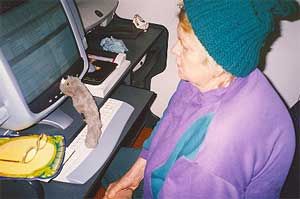 The “Furry” Friend Down Under
The “Furry” Friend Down Under
But Bush Baby had no sooner settled in before a need for help was brewing on the other side of the world. Dialysis Support member Joy Brock, in Australia, was running into difficulties. So Bush Baby had his next assignment.
In July 2003, Robin put him in a box and off he went on a very long airplane ride to Gracemere, Queensland. There, in all that open space, Joy had a beloved little garden where weeds needed to be pulled and watering had to be done regularly. She also loved fishing, and snapped a picture of Bush Baby, pole in hand, at her favorite fishing hole.
Lance Daly-Holt lives in Melbourne, Australia, and is a keen football fan. He followed up on Robin’s discovery that Bush Baby loves watching football and took him to many “footie” games. Lance’s wife, Annie, who is also his nurse and home HD partner, knitted Bush Baby a team-colored scarf so he could root right alongside Lance for his favorite team. Lance is a strong believer in the importance of physical exercise, and he cycles regularly.
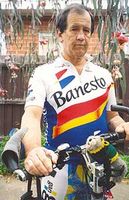 A Sake Welcome
A Sake Welcome
In September 2003, Bush Baby hit the road once again and headed to Japan, where he was welcomed with a sake ceremony by Dialysis Support contributor, Annie Hubert, whose husband, Angel, was the kidney patient. A Peruvian who speaks Spanish, Angel faced some fairly daunting language barriers doing HD in a Japanese clinic. Nevertheless, Bush Baby was impressed with the fact that, while kidney failure is a worldwide phenomenon, the availability of dialysis treatment is too.
After introducing him to dialysis in Japan, Annie took Bush Baby to visit a Japanese school. The nine-year olds there honored him with their origami flowers and animals. Then it was time to move on.
Canals and Clogs
By May 2004, Bush Baby had landed in the Netherlands, where Dialysis Support member Lies Hoekstra greeted him. She took him to Amsterdam and gave him a ride on a canal. She also introduced him to beer and the famous juniper-flavored gin, Jenever. Lies gave Bush Baby his own miniature clogs so that he would feel at home in Holland. The clogs are now part of his worldwide travel kit and go everywhere with him, along with the jacket and scarves that were made for him in Australia.
The highlight of Bush Baby’s visit to Holland was being invited to the yearly field trip of the editorial staff of the magazine for Dutch kidney patients, Wisselwerking. This magazine published an article about Bush Baby’s travels around the world and emphasized how his journey had been made possible through the friendships established via the common ground of the Dialysis Support discussion group. Once again, Bush Baby had accomplished his mission of contributing to international happiness by loving and being loved.
A Home Dialysis Advocate
In July 2004, our furry friend was on his way to the U.S. to stay with Bill Peckham in Seattle. Bill has been on home HD since 2001. Except for a monthly checkup, this treatment modality provides freedom from having to go to a dialysis center. Home HD does involve setting up your own machine, as well as special training for you and a helper. But after a while, the set-up and treatment becomes second nature.
Bill has a career of advocating for kidney patients, and has served on the executive council of the Northwest Kidney Centers. He also works with the Renal Support Network, a nationwide, patient-focused, patient-run organization that meets the non-medical needs of people affected by CKD, including advocacy. Not surprisingly, after meeting Bill and watching him in action, Bush Baby was so impressed with home dialysis that he now carries a DVD about the process with him when he travels.
In August 2004, Bill Peckham sent Bush Baby to Bill Ford in Florida, who had received a transplant in 2002 and calls his new kidney, Ridley. But Bush Baby’s Florida stay was cut short by a near-record number of hurricanes. It seems that the small, furry creature became scared that he might drown, so he asked to be sent to a drier climate.
The One-Armed Bandit
Next thing he knew, Bush Baby was in Nevada with Ginny McCracken. It was now September 2004, and the furry bundle of joy had been on the road for more than a year.
Ginny gave Bush Baby an entertaining time in drier Nevada. His big adventure was going to the newest casino in town. The casino gave Bush Baby a set of Mardi Gras beads, which now travel with him wherever he goes. But the casino refused Ginny’s request to snap a photo of him working a slot machine. Apparently, there is a state law against photographing anyone (even a Bush Baby) sitting at slot machines, so there is no record of him paying homage to the one-armed bandit.
The Transplant Experience
By now, Bush Baby knew a lot about ESRD and dialysis, but not much about kidney transplants. Julie (last name withheld by request) from Connecticut had known for a long time that her kidneys were failing. She realized that she didn’t want to wait for her kidneys to fail completely and then have go on dialysis. Instead, she opted for a transplant before she needed dialysis. And she was fortunate to have a relative, Aunt Susan, who volunteered to be a donor.
There was a lot of medical footwork that needed to be done to prepare for the transplant, so Bush Baby stayed with Julie during this process and helped her be patient. Eventually, transplant day arrived in March 2005. Bush Baby stayed with Julie in the hospital, but was not allowed in the operating room.
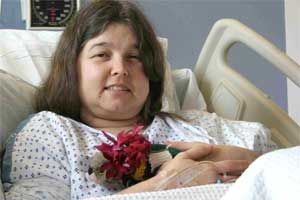 The Dialysis Support E-Mail Network
The Dialysis Support E-Mail Network
By now, Bush Baby had completed his studies of ways of living with kidney failure. He had done HD with Joy and Angel. He had performed PD with John, home HD with Bill Peckham and Lance, and had held Julie’s hand through her transplant experience. It was now time to visit the headquarters of the Dialysis Support e-mail network.
Dialysis Support, an online discussion group, allows people with kidney failure to meet each other and become friends even though they live far apart. As a result of this network, Bush Baby has been to Australia, Japan, Holland, Florida, Washington, Connecticut, Georgia, and his home state, California. He has visited casinos, been on canals, gone to Australian football games, drank Dutch gin and Japanese sake, and had lots of other adventures.
Dialysis Support, located at health.groups.yahoo.com/group/dialysis-support/, was founded in 1995 by Dale Ester, a former dialysis patient who subsequently received a transplant. This discussion group personifies the type of support that can be received from other people with the same chronic condition. Bush Baby has been adopted as the official mascot of the Dialysis Support group.
Bush Baby stayed with Dale from May 2005 until October 2006, helping him operate the discussion group, which now has over 1,000 members. He then came home to John in October 2006 to help him write this story.
During Bush Baby’s adventures, John moved from being a person with ESRD, scared of being on dialysis, to someone happily living with a transplant that took place in October 2003. All of this was done with the encouragement and support of this rather unique discussion group.
Bush Baby wants to travel again. Lance said that “Bush Baby traveling the world to unite different members of the group was one of the best things to happen to me during my time of participation.” So, if you would like to have Bush Baby visit and give you support, just join the Dialysis Support online discussion group and ask for him to travel your way!
About the Authors
John Mudie, PhD, MS, BS, lost his kidney function due to treatment with lithium carbonate for bipolar disease. He received a successful transplant at Stanford University in 2003. He has worked as an Associate Professor of Geophysics and in the mental health field. He has two grown children and lives in Goleta, CA.
Yvonne Emerson, former Ventura County Business Journal Editor and Senior Editor of Independent Business Magazine, refocused her writing from business to health issues in 1996 as a result of personal health challenges. The former Senior Editor of Living Fit, she has two daughters and three grandchildren, and currently lives in Santa Barbara, CA.
Web ID 218


